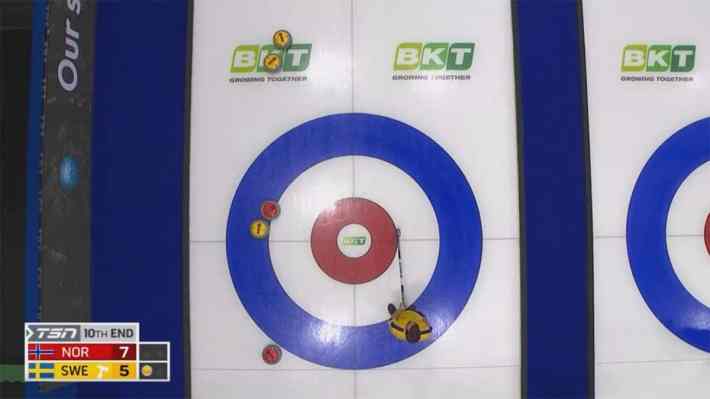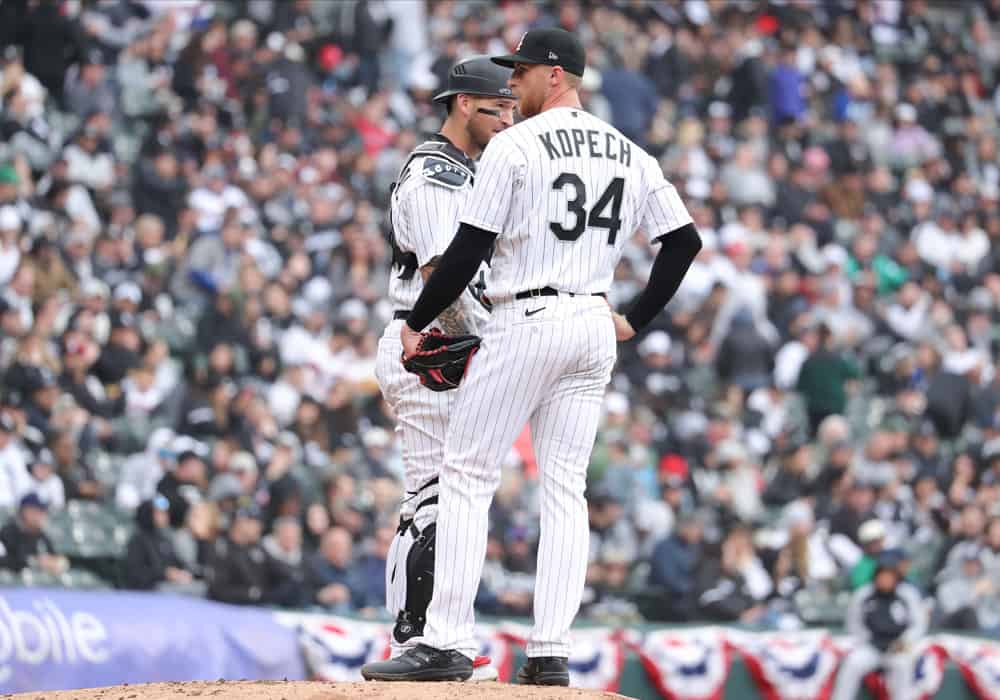I went back and watched video of the three Michael Kopech pitch types the Giants sent out of the yard on Monday, and I didn't see any signs of tipping.
Granted, the broadcasts are often cutting to the pitch in the middle of a windup, so perhaps there's a giveaway leg tempo that can't really be tracked. But there wasn't anything unusual about his release points, and there wasn't anything with his hand positioning that jumped out. Here's a recent example that Eno Sarris found that shows the kind of stuff one can look for.
The bigger problem I saw was in the sequencing. For Michael Conforto's homer, he swung through a belt-high fastball at 94 to fall behind 0-2, but got on top of a slightly higher, slightly slower fastball at 93. Mike Yastrzemski homered on a second consecutive curveball
Thairo Estrada hit a first-pitch slider, but it spun over the inside part of the plate. David Villar getting around on an inner-half, upper-zone fastball might not have been possible if it wasn't fifth in a row.
But his problems extended beyond the fifth inning, as he didn't get a single whiff on 25 breaking balls over the course of his start. That's unusual enough to think he might've been giving something away, even if we can't see it from the center-field camera, but Pedro Grifol wasn't going to offer any tips himself, so we'll have to watch him Sunday and see if that offers any other clues.
Combining Jake Burger and Gavin Sheets
Look, I've made no secret of my desire to make the White Sox defy God by merging Gavin Sheets and Jake Burger into one being that would have the bat control and plate discipline of the former, and the raw power of the latter. It's not like we're grafting a strong torso on top of fast legs and expecting all coordination to transfer. I only traffic in reasonable demands.
Now that Burger is back on the 26-man roster after Eloy Jiménez's hamstring strain, James Fegan informed me that everybody involved might be amenable to unleashing horrors upon the natural world.
“Burger and I knew all along at some point we’d have to step up and fill a role like that, and that’s what we’re prepared to do. That’s what we’ve done the last couple years — and done it pretty well. We make a pretty good player together.”
Even Grifol is on board.
Liam Hendriks finishes chemo treatment
Even if the White Sox somehow won the home opener, Liam Hendriks still would've provided the best news by sharing that he was starting his last round of chemo on Monday.
And on Wednesday, he rang the victory bell to celebrate that last treatment, with a message of thanks to everybody who supported him.
Curling's new greatest shot?
This isn't following up on anything except for my continued advocacy for my second-favorite sport, but one of the best things about curling is how much of the game's physics remain subject to interpretation.
Down two in the final end against Norway in the World Championships on Wednesday, Sweden's Niklas Edin faced what appeared to be an impossible scenario for tying the game.

A team's rocks only count for points when they're the closest to the center, and Norway's red rock was impossible to dislodge by any conventional shot. The yellow guards up top allowed only one path in, and because that red stone was frozen to the yellow stone behind it, bumping the red would push the yellow stone behind it even farther away from the center, making it impossible to score two.
So Edin chose a shot so unconventional that it elicited laughter from the crowd, and it's understandable why they responded as such. He's the guy who conceded the gold medal game to the United States in 2018 with a 360, so when he released this one with approximately 5,000 RPM, as opposed to the standard three or four full rotations, the fans in attendance thought he was deadpanning another acknowledgement of impossible odds.
But Edin meant it. The goal of such severe spin is to enhance the gear effect, which is the reason why the rock that's hit takes the opposite spin of the one that hit it. They just haven't existed in curling because nobody's seen the use in attempting to tame a shot that's damn near impossible to control and is only theoretically useful in the most desperate of situations.
So that's a club curler's explanation of what you're going to see unfold, and even if you still don't exactly understand what I'm trying to describe, you can get a sense of the stakes from the reactions of the analysts.
The TSN feed (Canada's ESPN) doubted it until the moment it made contact.
The World Curling feed -- featuring one of the 2018 U.S. Olympians, Tyler George -- gave it more credibility out of his hand, and as it drew near to contact, you can hear them begging to see it work.
Typical curling highlights usually feature two or three stones getting removed from the house from super-precise angle, so it might be underwhelming to see one stone moved four inches. But it's being considered the greatest shot because it showed that it's possible to control a force that seemed naturally unpredictable and/or pointless to practice, and its first execution on record occurred in the highest-leverage of situations.
The top teams are all going to be experimenting with this now, trying to figure out how to implement it in less dire situations. Hacks like me are going to try it when we don't know what else to do, just to see what happens, and we'll whiff horribly. It's impossible, until it suddenly isn't.






